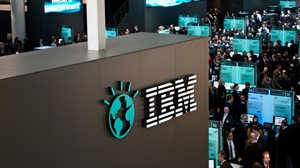OpenText, Microsoft, IBM Lead Forrester's ECM Wave 2017
Enterprise Content Management (ECM) to be a global market worth $8 billion in 2017, rising to $9 billion in 2018, according to Forrester. The market research firm has recently published The Forrester Wave: Enterprise Content Management — Business Content Services, Q2 2017. Below are how the 15-platforms stack up in the enterprise content management report:
-
Leaders: OpenText Content Suite, IBM, Microsoft, OpenText Documentum, Alfresco, Box, and M-Files
-
Strong Performers: HPE, Hyland, iManage, SpringCM, Everteam, Kofax, and SER Group
-
Contender: Upland
As many industry insiders, Forrester’s analysts also stated that the ECM market in an important transitional state. Therefore, in light of insight provided by Forrester in its report, this article will discuss what enterprises are looking for and what vendors should focus on, as well as the overview of the most significant ECM vendors.
What Should ECM Vendors Invest In?
In August 2016, Forrester conducted a Global Enterprise Content Management Online Survey, and according to the results, 87 percent of the surveyed ECM decision makers planned to continue their deployments into 2017. More importantly, 45 percent of them expect to increase their deployments or usage somewhat while another 42 percent plan to increase significantly. The opportunity lies therein for the vendors, but not for all of them. To receive the lion’s share from this market, vendors should leverage usability, customer success programs, and simplify file sharing and collaboration capabilities. On top of those, analytics plays a huge role in creating a value for enterprises and standing out from the crowd.
There is an alarming situation for longtime ECM providers, though. According to Forrester’s market observation, new entrants are closing deals with cloud-native content platforms or modern architectures that support the delivery of flexible, granular, purposeful applications as longtime ECM vendors’ complex, highly customized on-premises deployment options lead enterprises to consider new cloud-native content platforms. To maintain and expand their market share, vendors should invest in significant user interface modernizations, mobile frameworks, customer success programs, and low- or no-code design tools.
Here are the areas of improvement:
-
To increase user adoption level, vendors should provide solutions that automate the process of assigning metadata to drive retention policies via analytics, inheritance, or background processes, instead of forcing end users to assign metadata.
-
Globalization is on the rise. Enterprises want their multi-cultural teams to collaborate on the same project in real time and in a secure manner. Therefore, vendors should offer solutions that provide organizations the flexibility to create their restrictions based on metadata, or IP addresses, rights management rules in the process of file sharing and collaboration.
-
A recent Forrester survey revealed that only 33% of surveyed ECM decision makers were actively using mobile devices to access or use their ECM systems. A further 39% had plans to adopt mobile into 2017-18. 28 percent had no firm plans to introduce mobile use for ECM. These figures demonstrate that the adoption of mobile is quite low in the ECM market, for that reason, the situation also represents an area to improve upon.
-
The combination of technology-assisted review (TAR) and analytics powered by machine learning helps organizations protect their sensitive content as well as categorize large volumes of content exponentially faster than humans. ECM vendors either team up with the technology providers or acquire these capabilities in order to deliver better experiences to end users.
Top ECM Vendors: OpenText, Microsoft, and IBM
According to the Wave, OpenText, Microsoft, and IBM are considered as the top ECM solution providers, followed by M-Files, Alfresco, and Box.
The research firm evaluated OpenText Content Suite and OpenText Documentum separately as, during the Forrester Wave evaluation process, OpenText finalized its acquisition of the former Dell-EMC Enterprise Content Division. The Waterloo, Ontario-based enterprise information management provider seems to enjoy the fruition of its recent product upgrade; OpenText Content Suite 16. With this major update, the vendor aimed at providing personalized experiences through the new simple and responsive user interface with role-based views. Forrester’s clients expressed high levels of satisfaction with OpenText Content Suite’s integration capabilities, life-cycle management, and overall foundational library services. The vendor has room to improve when it comes to faster innovation and integrations across acquired components, though.
during the Forrester Wave evaluation process, OpenText finalized its acquisition of the former Dell-EMC Enterprise Content Division. The Waterloo, Ontario-based enterprise information management provider seems to enjoy the fruition of its recent product upgrade; OpenText Content Suite 16. With this major update, the vendor aimed at providing personalized experiences through the new simple and responsive user interface with role-based views. Forrester’s clients expressed high levels of satisfaction with OpenText Content Suite’s integration capabilities, life-cycle management, and overall foundational library services. The vendor has room to improve when it comes to faster innovation and integrations across acquired components, though.
 Last week, here at CMS-Connected, I asked the question that Documentum’s customers have been dwelling on for a long time as the product has undergone two major ownership changes in the last year: Will OpenText really invest in Documentum? Forrester cited that its clients are concerned about account billing and communication practices. To improve this situation, OpenText is on its Innovation Tour across the globe and has been detailing its plans for the integration of the Documentum product family with its portfolio. During the keynotes, the OpenText executives have clearly stated that there is no requirement for customers to migrate from one platform to another, as OpenText will continue to support and sell both the Content Suite Platform and the Documentum Platform along with associated applications and solutions. However, banishing the doubts coming from a somewhat distrusting user base will take more than keynotes and announcements, so hopefully, the vendor will roll out solutions that can fulfill Documentum customers’ long-awaited needs.
Last week, here at CMS-Connected, I asked the question that Documentum’s customers have been dwelling on for a long time as the product has undergone two major ownership changes in the last year: Will OpenText really invest in Documentum? Forrester cited that its clients are concerned about account billing and communication practices. To improve this situation, OpenText is on its Innovation Tour across the globe and has been detailing its plans for the integration of the Documentum product family with its portfolio. During the keynotes, the OpenText executives have clearly stated that there is no requirement for customers to migrate from one platform to another, as OpenText will continue to support and sell both the Content Suite Platform and the Documentum Platform along with associated applications and solutions. However, banishing the doubts coming from a somewhat distrusting user base will take more than keynotes and announcements, so hopefully, the vendor will roll out solutions that can fulfill Documentum customers’ long-awaited needs.
IBM has one of the broadest ECM portfolios for large enterprises. The vendor’s offerings are  especially strong in the financial services, insurance, and government sectors. By leveraging its Watson products, IBM works on the integration of its cognitive services into its content and case management offerings in an effort to become an innovator in the ECM space. According to the Forrester’s Wave report, customers are satisfied with many core repository capabilities but they have complaints about mobile user experiences with mobile capabilities. This situation has been improved with the release of the latest version of the Content Navigator mobile client, but still, it is considered as a weakness for the Armonk, New York-based vendor.
especially strong in the financial services, insurance, and government sectors. By leveraging its Watson products, IBM works on the integration of its cognitive services into its content and case management offerings in an effort to become an innovator in the ECM space. According to the Forrester’s Wave report, customers are satisfied with many core repository capabilities but they have complaints about mobile user experiences with mobile capabilities. This situation has been improved with the release of the latest version of the Content Navigator mobile client, but still, it is considered as a weakness for the Armonk, New York-based vendor.
With the release of SharePoint 2016, Microsoft aimed at making corporate intranets more accessible on the go, more intelligent, and more personalized. Microsoft has moved SharePoint towards a “cloud-first, mobile-first” roadmap to make the platform more relevant and useful for modern web users. In return, the vendor has driven enterprises to shift their content to cloud services and Forrester’s client expressed a high level of satisfaction with integration capabilities.
Aside from the 15 vendors evaluated in this report, Forrester recommends its clients exploring alternative ECM vendors. With regard to this point, the research firm is suggesting European vendors that have a global expansion plan as well as enterprise file sync and share (EFSS) providers such as Box, Dropbox, and Google Drive. In the report, Nuxeo also received a shout out as the open source content platform is architected as a highly scalable content platform for a broad range of content types, addressing use cases for ECM, digital asset management, and case management.
My POV
The ECM solutions have long offered end users the illusion of control and the dream of a single centralized platform. As a result, many solutions failed at end-user adoption as some prominent functionalities such as filing and classification of documents were not user-friendly and became obsolete. Therefore, today, the purpose of Enterprise Content Management is being questioned as it is often asked whether ECM is dead. To me, the golden age of high growth for ECM has ended but it is certainly not dead. Studies back me up as they revealed that the market is still strong at approximately $5.5 billion in license and subscription revenue per year and still around 7-8 percent yearly growth. For vendors, to increase their market share and user adoption, they have to rely on innovation. As Forrester cited in the report, a focus on usability is one of the keys. The prominent reason behind it is that 75% of the workforce will be millennials by 2020 and this new generation is not known for their high tolerance of cumbersome and lacking features, as they are used to working with fast technology solutions.
Lastly, if you are interested in reading more content on the Enterprise Content Management market, you should check out our most-read ECM articles entitled What Will Drive the ECM Market in 2017? and Death of ECM, Birth of Content Services.

Venus Tamturk
Venus is the Media Reporter for CMS-Connected, with one of her tasks to write thorough articles by creating the most up-to-date and engaging content using B2B digital marketing. She enjoys increasing brand equity and conversion through the strategic use of social media channels and integrated media marketing plans.